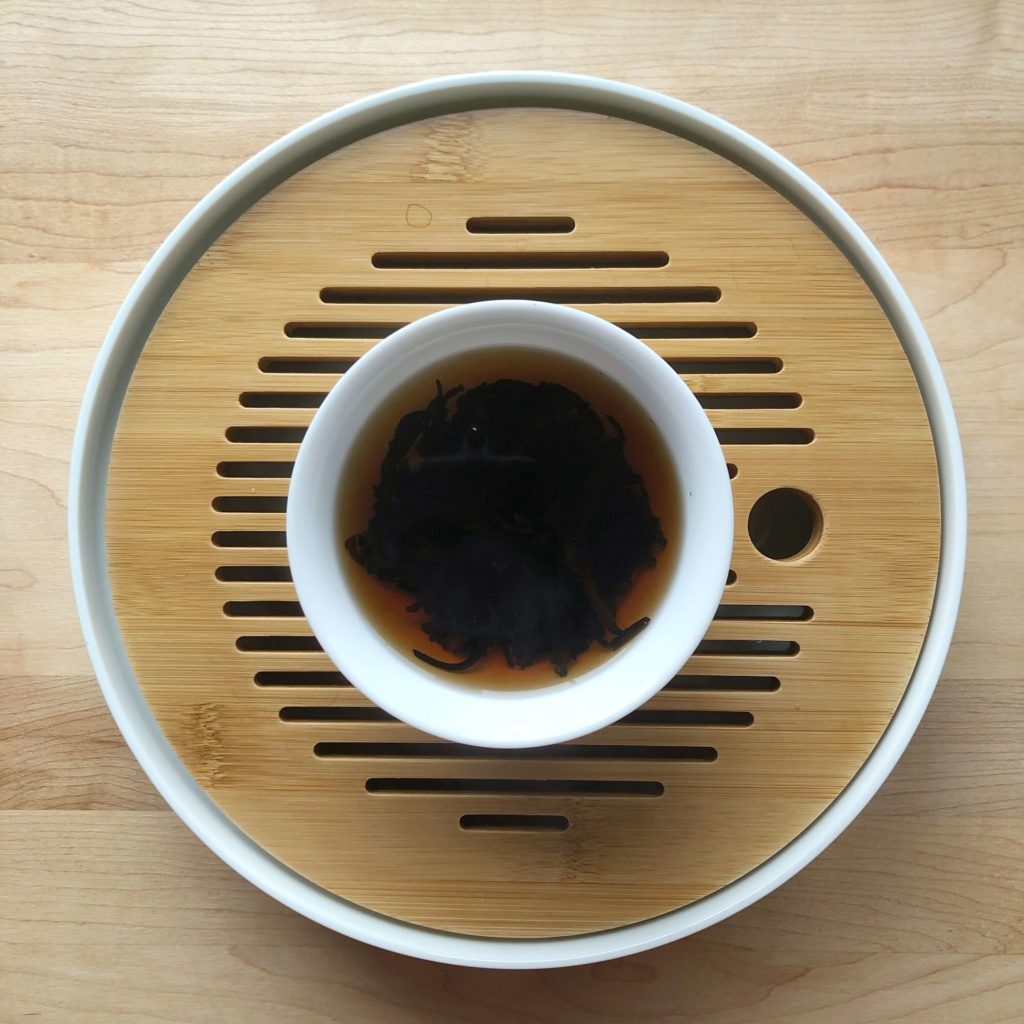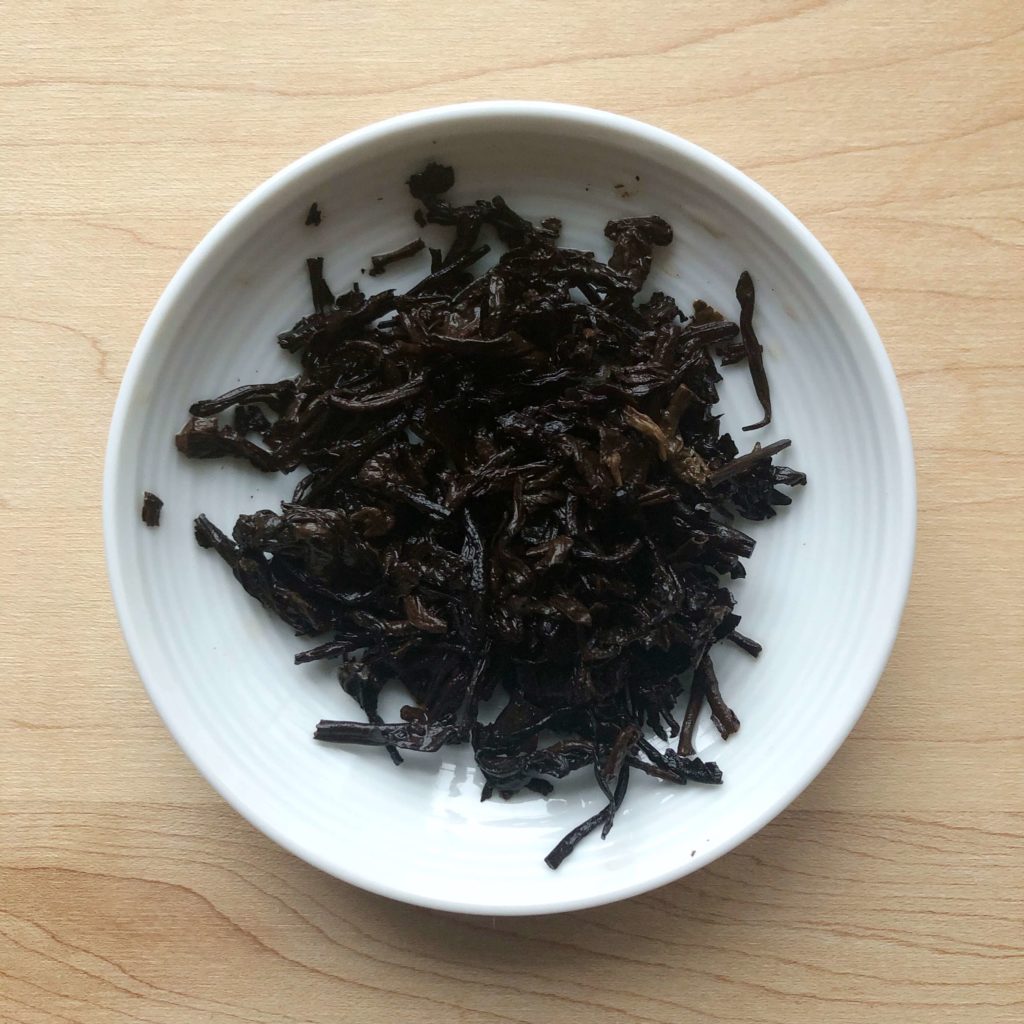
A month ago, I wrote an introductory post about pu-erh where I interviewed Zhen from Zhen Tea. She mentioned her Shu Pu’er Coins would be good for beginners as it didn’t require tools to break the tea apart. Since I already had some, I thought it would be nice to taste the coins as follow-up!
Description: “Rich, bold. Leather, wood and hints of spiciness (dry nutmeg)”
Instructions: half coin | 90ml at 100°C for 20 secs, 2nd & 3rd infusion for 30s | 7-10 infusions
Review: I originally purchased the shu pu-erh coins because I liked that all I had to do was break the coins in half and it was ready to brew! I am a huge proponent of pu-erhs that are pressed in a way to can be easily broken apart without a tea pick because even for myself, breaking a tea cake can be intimating!
The pu-erh coins came stacked in a roll like real coins and were wrapped in craft paper. The pressed leaves were mostly dark brown with some lighter reddish brown leaves and had a damp earthy, musky, and mushroom smell. Each hand-pressed coin was around 4.5 cm (2 inches) across with a deep score cutting down the middle. It was easy to break the coin in half at the score and I had to use little to no force.
Pre-warmed gaiwan: After warming half of the coin at the bottom of the gaiwan, the dry leaves had an earthy, musky, barnyard, and mushroom smell.
Quick rinse: Following a short rinse, the liquor was a pale golden orange colour and no flavour had developed yet.
Infusion 1 (20 seconds): The liquor was a darker reddish brown colour with a faint musky barnyard smell. There was a mild taste of earth, damp cellar, and wood.
Infusion 2 (30 seconds): A darker reddish brown colour started to emerge and the liquor had a mahogany smell. There was a strong burst of flavour as the coin had mostly broken apart. The liquor tasted herbal, mineral, and fermented which lingered at the back of the throat.

Infusion 3 (30 seconds): The liquor became an increasingly darker brown colour. While it still had an earthy and mushroom taste, it also had a metallic mineral note with a hint of dryness at the back of the throat.
Infusion 4 (50 seconds): The liquor remained a dark brown colour and tasted more earthy, woodsy, and slightly liquorice. It lingered in the mouth and was drying on the tongue.
Infusion 5 (1.10 seconds): Similar to Infusion 4, the liquor was dark brown with notes of earth, musk, and bark.
Infusion 6 (1.30 seconds): Bitterness started to creep into the dark brown, almost black, liquor which was similar to the colour of pu-erh at dim sum. The flavours were musky, mineral, mushroom, and smoky.
Infusion 7 (1.50 seconds): The flavours started to mellow out slightly as the liquor became a lighter brown colour. There was the classic fermented earthy notes but also a hint of sweet dates.
Infusion 8 (2.10 seconds): While some metallic and damp earth notes reminded me, the liquor was quite faint and was drying at the back of the throat.

The wet leaves were short, stubby, and twisted steams along with some fragmented leaves and smelled woody and roasted.
I tasted this tea with various foods ranging from green grapes (that were refreshing) to a sesame bun (which highlighted a nice roasted quality). I found the shu coins easy to brew throughout the day. The coins would likely hold up well brewed grandpa style (where hot water is added to the tea throughout the day). Lastly, since they are compact, the tea would be nice to take on a trip or a hike along with a thermos of hot water.
Overall, this is a nice smooth shu pu-erh with a range of flavours that wouldn’t be too intimidating to people who are new to pu-erh teas. For anyone who already likes the woody, mineral, fermented notes of pu-erh, this tea has all those classic notes. As for anyone new to pu-erh, there isn’t a way to brew this tea wrong (3.5/5 rating)!
- Type: Pu-erh tea
- Origin: China, Menghai, Yunnan Province
- Caffeine: Unknown
- Ingredients: Pu-erh tea
- Company: Zhen Tea
The question of the post: What shape do you like your pu-erh?
